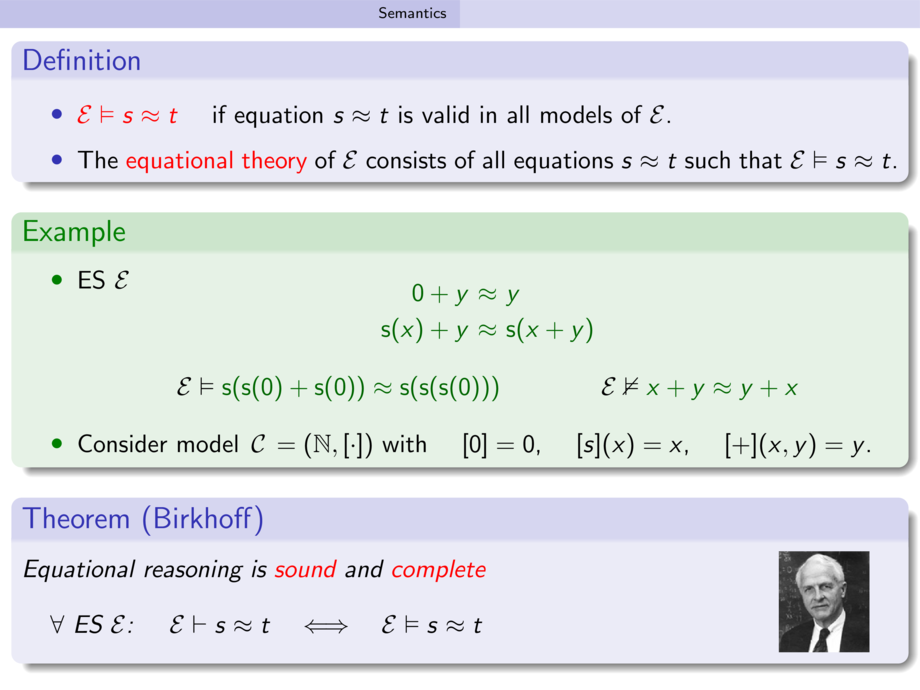



































































































33/205
\begin{frame}
\small
\vspace{-1ex}
\begin{definition}
\smallskip
\begin{itemize}
\item
\alert{$\EE \vDash s \approx t$} \quad %(\alert{$s =_\EE t$}) \quad
if equation $s \approx t$ is valid in all models of $\EE$.
\item<2->
The \alert{equational theory} of $\EE$ consists of all
equations $s \approx t$ such that $\EE \vDash s \approx t$.
\end{itemize}
\end{definition}
\begin{example}<3->
\begin{itemize}
\item
ES $\EE$
\vspace{-1ex}
\[
\GREEN{\begin{array}{r@{~}c@{~}l}
\m{0}+y & \approx & y \\[.5ex]
\m{s}(x)+y & \approx & \m{s}(x+y)
\end{array}}
\]
\onslide<4->
\[
\EE \vDash \GREEN{\m{s}(\m{s}(0)+\m{s(0))} \approx \m{s(s(s(0)))}}
\qquad\qquad
\onslide<5->
\EE \nvDash \GREEN{x+y \approx y+x}
\]
\vspace{-3ex}
\item<6->
Consider model $\Cc = ( \NN, [\cdot] )$
with \quad $[0] = 0$, \quad $[s](x) = x$, \quad $[+](x,y) = y$.
\end{itemize}
\end{example}
\begin{theorem}<7->[Birkhoff]
\smallskip
Equational reasoning is \alert{sound} and \alert{complete}
\[
\text{$\forall$ ES $\EE$: \quad $\EE \vdash s \approx t \quad \Longleftrightarrow \quad \EE \vDash s \approx t$
% ${\approx_\EE} ~=~ {=_\EE}$
}
\hspace{4cm}
\smash{\raisebox{-1.75ex}{%
\href{http://en.wikipedia.org/wiki/Garrett_Birkhoff}%
{\includegraphics[height=9ex]{../graphics/birkhoff}}}}
\]
\vspace{-3ex}
\end{theorem}
\end{frame}

